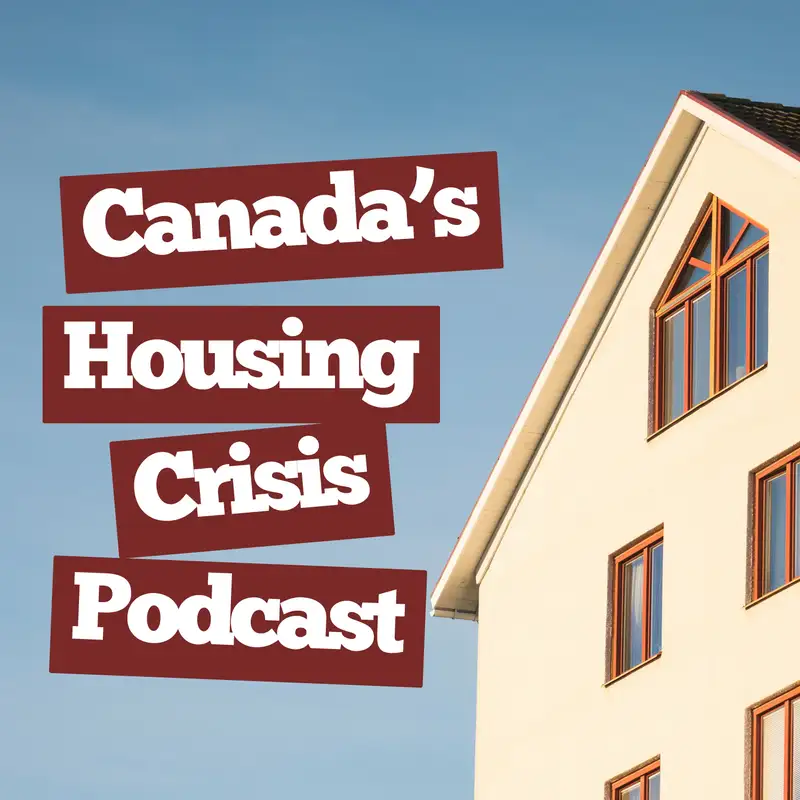
How Zoning Laws Are Affecting Canadian Housing Affordability (And What Cities Are Doing to Fix It)
Canada's housing crisis is about invisible walls built into municipal zoning codes that most people never think about. In Yellow Belt neighborhoods, homeowners can tear down a modest bungalow and build a multi-million dollar mansion, but they cannot legally construct a simple duplex that would house two families instead of one. This is exclusionary by design, with demographics revealing that residents in these protected zones are wealthier, whiter, and have better access to parks and city amenities than those living in denser areas. Meanwhile, cities like Montreal prove there's another way, with 58% of dwellings as apartments achieved through "gentle density", duplexes, triplexes, and walk-ups, rather than high-rise towers, resulting in better affordability than Toronto or Vancouver.
The good news is that Canadian cities are finally waking up to this manufactured scarcity, with Edmonton leading the charge by eliminating single-family zoning citywide in January 2024 and approving 30% more dwelling units as a result. Vancouver, Toronto, Calgary, and Halifax have followed with their own reforms, incentivized by the federal government's $4 billion Housing Accelerator Fund that rewards municipalities for removing zoning barriers. Combined with solutions like modular housing construction, public land utilization, skilled trades immigration, and increased social housing investments, Canada has a realistic pathway to building 3.3 million new homes over the next decade, exceeding the 2.3 million additional homes needed by 2030.
Key Takeaways
- 80% of Vancouver's is zoned exclusively for single-family homes, making denser housing illegal in most neighborhoods
- Edmonton eliminated single-family zoning citywide in January 2024 and saw a 30% increase in approved dwelling units within the first year
- Canada's Housing Accelerator Fund has allocated $4 billion to municipalities willing to remove zoning barriers, with 179 agreements to fast-track over 750,000 new units
- Montreal demonstrates that "gentle density" (duplexes, triplexes, walk-ups) creates better affordability than single-family zoning without requiring high-rise towers
- Modular construction can deliver homes 30-50% faster than traditional methods and 20-25% cheaper, with Vancouver deploying 663 modular supportive housing units successfully
Chapters
00:00 Introduction: Why Zoning Laws Matter for Housing Affordability
02:34 The Yellow Belt: How Single-Family Zoning Locks Out Families
04:58 NIMBY Opposition and the Democratic Problem
07:21 Edmonton's Bold Move: Eliminating Single-Family Zoning
09:45 Public Lands for Homes: Using 4,000 Hectares Smarter
12:00 Workforce Solutions: Tackling the $28,000 Labor Shortage Cost
14:16 Social Housing: Why Canada Lags Behind Europe
16:35 The Math: How 3.3 Million New Homes Is Achievable
19:00 Coordinated Solutions: From Modular Housing to Climate Resilience
21:25 Closing: The Path Forward Through Existing Communities
Curious about how we can really fix Canada’s housing crisis?
• Visit https://canadashousingcrisis.transistor.fm for more episodes
• Share your questions and ideas by emailing hello@micme.com
• Join the newsletter at https://canadashousingcrisis.transistor.fm/subscribe
Fact Checks
- Toronto single-family zoning (70%): Pre-reform estimates indicate approximately 65–70% of Toronto's residential land parcels were zoned exclusively for detached homes, but methodologies vary between land area and parcel counts. Post-2023 multiplex reforms, the effective extent of exclusive single-family zoning has decreased.
- Vancouver single-family zoning (80%): Before 2023 reforms, roughly 75–80% of Vancouver's detached-home lots disallowed multiplexes. As of late 2023, provincial legislation and municipal policy permit up to six strata or up to eight secured rental units on most former single-detached lots, reducing true exclusionary zoning.
- Calgary single-family zoning (67.5%): The cited 67.5% figure lacks a direct source. Calgary's base-district rezoning in 2024 now allows ground-oriented multi-unit housing across former low-density zones, but an exact pre-reform single-family percentage is unverified.
- Edmonton 30% approvals increase: Edmonton's Zoning Bylaw 20001, effective January 2024, replaced single-detached zones with Small Scale Residential zoning permitting up to eight units per lot. City planning data indicate development approvals increased by approximately 25–30% year-over-year in the first half of 2024, not solely attributable to the bylaw but consistent with the reform's intent.
- Vancouver households vs land (35% occupy 81% of land): No authoritative source found. The ratio appears in academic commentary but should be removed or footnoted pending verification.
- Montreal dwelling composition (58% apartments): According to Statistics Canada's 2021 census data, apartments (including duplexes and triplexes) comprised about 55–60% of Montreal's dwelling units. Montreal's price-to-income ratio remains lower than Toronto's and Vancouver's, but exact affordability rankings require a consistent metric reference.
- National housing shortfall (2.3M by 2030): The Parliamentary Budget Officer's 2023 report estimates Canada needs approximately 2.1–2.3 million additional homes by 2030 to restore affordability.
- Pathway to 3.3M new homes: The "3.3 million homes" scenario originates from host analysis combining municipal reforms and federal incentives; it is not an official government target.
- Housing Accelerator Fund ($4B; 179 agreements; 750,000 units): The $4 billion fund is confirmed. As of September 2025, Infrastructure Canada reports 172 municipal agreements under HAF, targeting approvals for over 720,000 homes. Exact counts should reference the latest HAF status update.
- Halifax 200,000-unit enablement estimate: No municipal projection found. The figure should be removed unless supported by a municipal development capacity analysis.
- OECD municipal approval rankings: Canada ranks 35th among 38 OECD countries for construction permit timelines, averaging 270 days—roughly three times the OECD average.
- Labor shortage cost (adds $28,000 Ontario): A 2024 Canadian Home Builders' Association report estimates labor shortages and material costs add about $22,000–$28,000 to the average Ontario new home.
- Social housing share comparison: OECD data show social housing stock as a percentage of total dwellings: Netherlands ~29%, Austria ~24%, Denmark ~19%, Canada ~4–5%.
- Climate resilience projections (35°C days): Climate models project that southern Ontario and BC's Fraser Valley could see triple the number of days above 35°C by 2050 under a high-emissions scenario. Cite Environment and Climate Change Canada's climate projections.